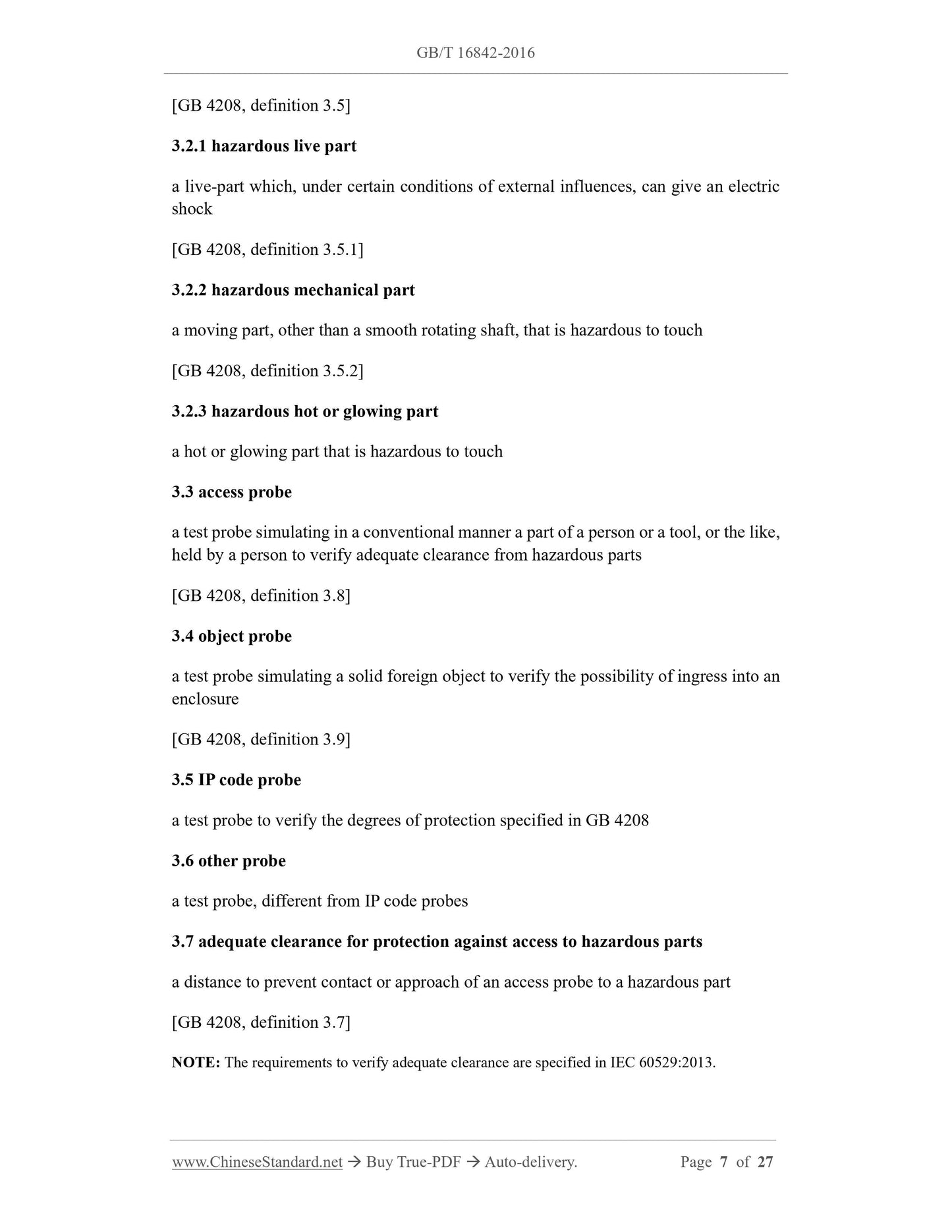1
/
of
7
www.ChineseStandard.us -- Field Test Asia Pte. Ltd.
GB/T 16842-2016 English PDF (GB/T16842-2016)
GB/T 16842-2016 English PDF (GB/T16842-2016)
Regular price
$260.00
Regular price
Sale price
$260.00
Unit price
/
per
Shipping calculated at checkout.
Couldn't load pickup availability
GB/T 16842-2016: Protection of persons and equipment by enclosures -- Probe for verification
Delivery: 9 seconds. Download (and Email) true-PDF + Invoice.Get Quotation: Click GB/T 16842-2016 (Self-service in 1-minute)
Newer / historical versions: GB/T 16842-2016
Preview True-PDF
Scope
1.1 Scope and purposeThis Standard specifies the dimensions and details of probes used to verify the
enclosure protection. They are used to verify:
a) Protection against human contact with hazardous parts inside the enclosure;
b) Protection against solid foreign objects entering the equipment inside the
enclosure.
Purpose of this Standard:
a) Gather the object probes, access probes and required new probes currently
specified in various standards into one publication.
b) Guide each standardization technical committee in selecting probes.
c) Relevant parties are encouraged to standardize the probes according to the
requirements of this Standard instead of modifying the dimensions and details of
the probes.
d) Limit the further increase in the types of probes.
1.2 Recommended principles
When selecting probes, give priority to IP code probes.
The use of other probes, especially the probes not specified in this Standard, shall be
limited to situations where the IP code probe is not applicable.
NOTE 1: The selection of a probe for a specific purpose is the responsibility of the relevant
standardization technical committee.
NOTE 2: If each standardization technical committee wants to create a new probe or modify the
current probe, it shall submit suggestions for modifying this Standard to the responsible authority
of this Standard.
In order to prevent conflicts with test results, the application of probes, test conditions,
result judgment and procedures are the responsibilities of the relevant standardization
technical committees.
Product certification based on probes that comply with the 1st edition of the standard
can continue to be valid.
Basic Data
| Standard ID | GB/T 16842-2016 (GB/T16842-2016) |
| Description (Translated English) | Protection of persons and equipment by enclosures -- Probe for verification |
| Sector / Industry | National Standard (Recommended) |
| Classification of Chinese Standard | K09 |
| Classification of International Standard | 29.020 |
| Word Count Estimation | 20,267 |
| Date of Issue | 2/24/2016 |
| Date of Implementation | 2016-09-01 |
| Older Standard (superseded by this standard) | GB/T 16842-2008 |
| Quoted Standard | GB 4208; IEC 60050(826)-1982; IEC 60536-1976; ISO 4287-1-1984 |
| Adopted Standard | IEC 61032-1997, IDT |
| Regulation (derived from) | National Standard Announcement No |
| Issuing agency(ies) | General Administration of Quality Supervision, Inspection and Quarantine of the People's Republic of China, Standardization Administration of the People's Republic of China |
| Summary | This standard specifies the dimensions and details of the test pieces used to inspect the enclosure for inspection: a) protection against hazardous components in the enclosure of the human body; b) protection against entry of solid foreign objects into the enclosure. |
Share













